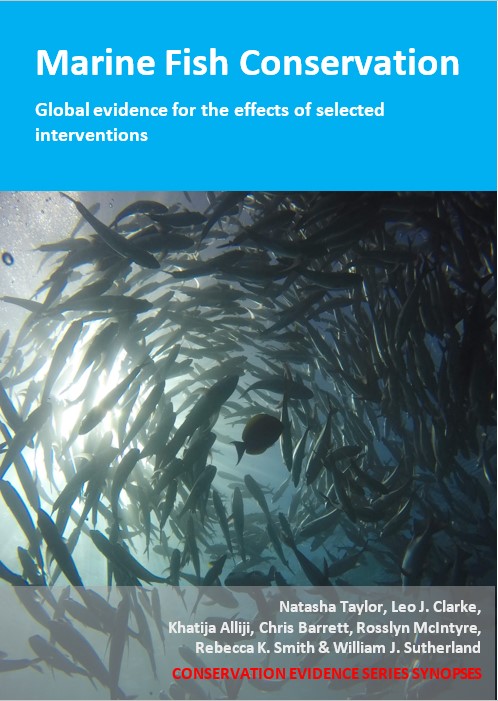Prohibit certain gear types
-
Overall effectiveness category Awaiting assessment
-
Number of studies: 2
View assessment score
Hide assessment score
How is the evidence assessed?
-
Effectiveness
not assessed -
Certainty
not assessed -
Harms
not assessed
Study locations
Supporting evidence from individual studies
A replicated, site comparison study in 2004 of 10 coral reef areas in the Indian Ocean off the coast of Kenya (Mangi & Roberts 2007) found that prohibiting certain gear types resulted in greater fish density in an area where all but one gear type was prohibited, compared to areas where only one gear type was prohibited, and to unrestricted sites. Fish density was higher in one area restricted to basket trap fishers only (105 fish/250 m2) compared to six areas fished by all gear types except beach seines (78 fish/250 m2) and three largely unrestricted areas (80 fish/250 m2); both sets being similar. In addition, gear regime did not affect catch levels landed by the Kenyan reef fishery (data reported as statistical results). Coral reef fishing grounds included: one location where only basket traps were allowed; six locations restricted to traditional forms of gear (traps, nets, hand lines, spears) but not beach seines; and three locations where all types of gear, including beach seines, were used. The years regulations were implemented were not reported. Fish density data were collected between January and March 2004 at 10 fishing grounds (1–125 km apart) off Kenya. Fish were identified to species and counted along four 50 × 5 m belt transects conducted at each study site during neap tides. Catch data from each fishing ground were recorded from all fish landed by individuals or groups of fishers.
Study and other actions testedA replicated, before-and-after study in 1996–2012 of four areas of seabed in the Kattegat, off Sweden/Denmark (Vinther & Eero 2013) found that a combination of areas where non-selective gear types were prohibited and long-term fishery closures resulted in a reduction in unwanted catch (likelihood of being caught and retained) on cod Gadus morhua by the Danish bottom fleet compared to before implementation. Across all areas, fishing impact (reported as a function of fish density, fishing effort and gear size selectivity) was reduced for all size groups of cod, by 60% in the period after management measures were introduced (2009–2011) compared to the impact before (2008; see paper for data). In addition, by area, the reduction in fishing impact was largest in areas subject to permanent or partial closures, but a decline in fishing impact was also found in areas outside of closures due to a general change to more selective gears. In contrast, in a seasonally closed area, fishing impact was estimated to have increased in 2009–2010 in relation to 2008 (see paper for data). In 2009, Sweden and Denmark introduced protected areas on historically important cod spawning grounds. The protected zone had four areas in which fishing was either completely forbidden or limited to specific selective gears (Swedish size sorting grid and Danish SELTRA codend with 300 mm mesh size in exit window) throughout part, or all, of the year. Annual changes in fishing impact were estimated by overlaying the spatial and temporal distribution of cod and fishing pressure. Analyses of cod distribution were based on time-series data from six research trawl surveys (between 20–80 stations/year spanning 1996–2012) in the first, third and fourth quarters of a year. Fishing effort data from the Danish fleet in the Kattegat derived from logbooks and satellite-based vessel monitoring systems were analysed for the period 2008–2011.
Study and other actions tested
Where has this evidence come from?
List of journals searched by synopsis
All the journals searched for all synopses
This Action forms part of the Action Synopsis:
Marine Fish Conservation





)_2023.JPG)














